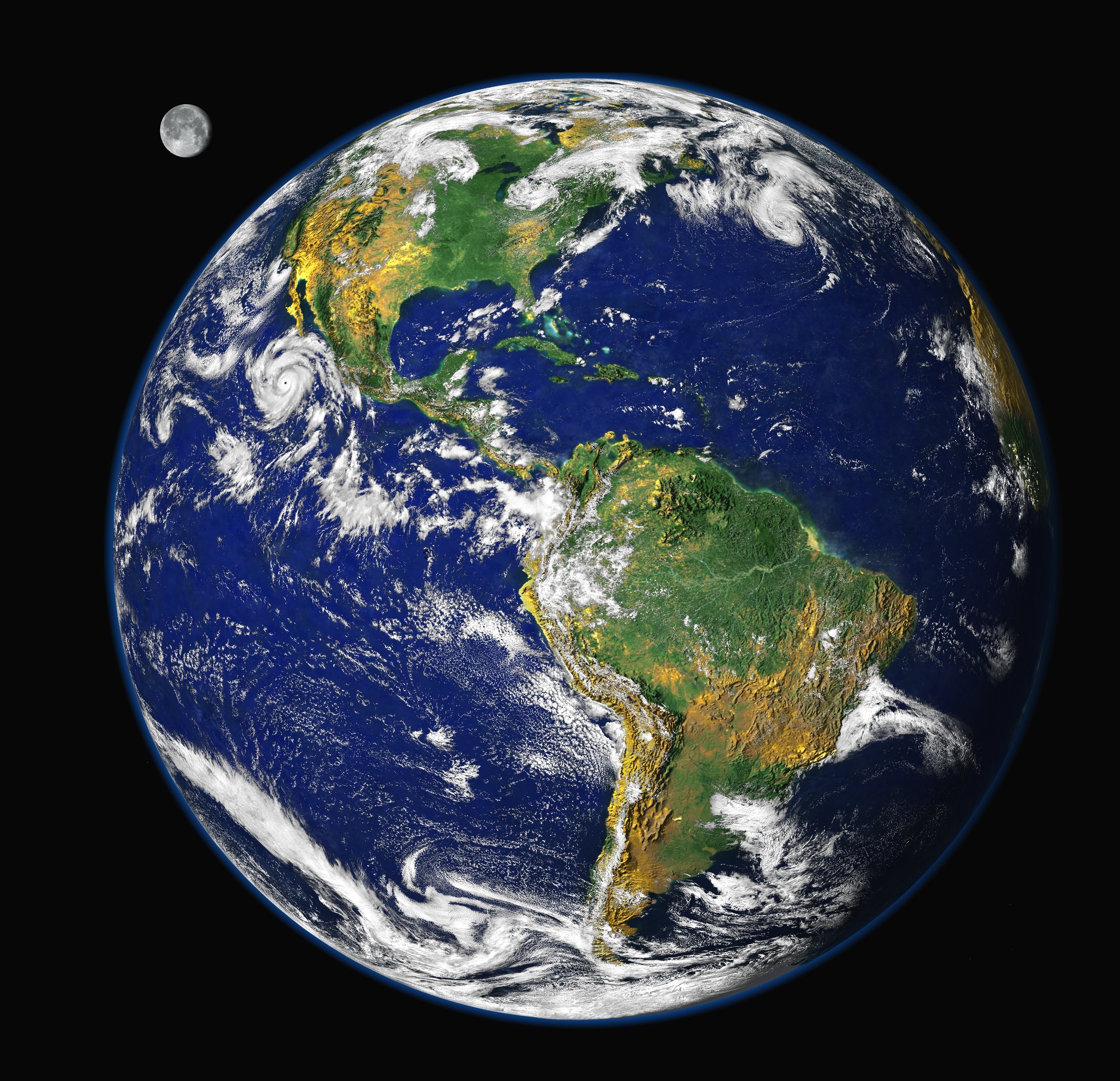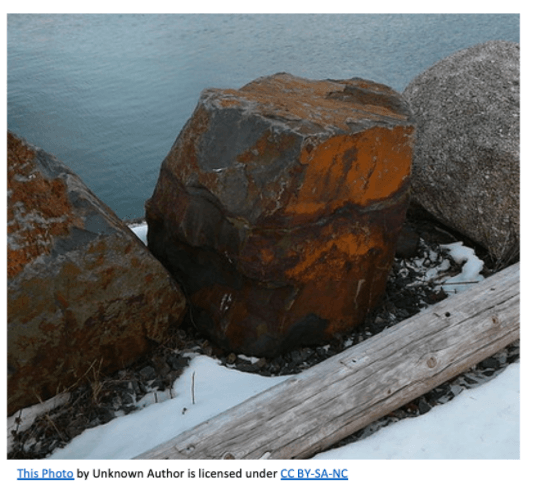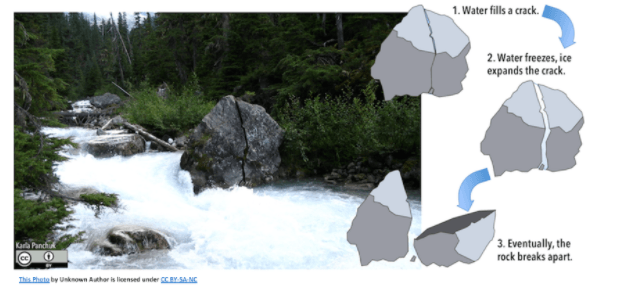The process that transports rocks, soil and sediments to a different location is called _________.
A. Crystallization
B. Deposition
C. Erosion
D. Weathering
C. Erosion
Acid rain is an example of:
A. Physical Weathering
B. Chemical Weathering
B. Chemical Weathering
What is physical weathering? give an example
The breakdown of rocks into smaller particles without changing it's composition
Minerals are naturally occurring, inorganic substances, that have a definite chemical composition and a definite crystalline structure. What is the 5th characteristic?
What is Solid?
What is the third planet from the sun?

Erosion and weathering contribute to the development of different types of:
A. Faults
B. Landforms
C. Tectonic boundaries
D. Stress
B. Landforms
Ice expansion is an example of:
A. Physical Weathering
B. Chemical Weathering
A. Physical Weathering
What is chemical weathering? Give an example
The breakdown of rocks/mineral where the chemical composition of the rock changes.
This term is Latin for "Fire"
What is Igneous?
What type of acid forms when water combines with carbon dioxide in the atmosphere?
What is acid rain?
Flood waters moving soil from one location to another is an example of:
A. Crystallization
B. Deposition
C. Erosion
D. Weathering
C. Erosion
Which type of weathering is illustrated:

Chemical
What is the difference between valley glaciers and continental glaciers?
Continental glaciers (pancake shape) are large bodies of ice that cover vast areas. Valley glaciers will only occur in mountain ranges.
Daily Double!
As a table, decide how many points you will wager on the Daily Double question.
Water is the agent of erosion on Earth.
Describe TWO ways water transports material.
Smaller particles have ________ surface area, which ______________ the rate of weathering.
More, Increases
The process of breaking down rocks is called _______.
A. Crystallization
B. Deposition
C. Erosion
D. Weathering
D. Weathering
Which type of weathering is illustrated:

Physical
What are the FOUR agents of weathering/erosion?
Wind
Water
Ice
Gravity
This sedimentary rock is formed from the compaction of clay particles.
What is Shale?
This type of mass movement requires water and soil.
What is a landslide/mudslide?
Which of the following aids in the weathering and erosion of rocks?
A. rain
B. water
C. wind
D. all are correct
D. all are correct
What specific type of chemical weathering turns feldspar into kaolinite ?
Hydrolysis
Explain the difference in shapes between a youth stage stream and an old age stream.
Old stage: a river with several meanders and possibly oxbow lakes
This Igneous rock can float on water.
What is Pumice?
True or False
Erosion and weathering works together to change the Earth's surface.
What is True
The composition of sediments on the Earth's surface
usually is quite different from the composition of the
underlying bedrock. This observation suggests that
A. bedrock is formed from sediments
B. bedrock is resistant to weathering
C. sediments are residual
D. sediments are transported
D. sediments are transported
Daily double!
Decide on how many points you would like to wager as a team.
When you are ready the question will be read and then a 45 second timer will start.
If you answer correctly, you win the points you wagered. If answered incorrectly, you lose the points wagered.
1. What specific process turns this mineral (hematite) into this reddish brown color?
2. How could you speed up this reaction?

What are some factors that affect the rate of chemical AND physical weathering?
High moisture and high temperature increases chemical weathering
High moisture and low temperatures increases physical weathering
What is the approximate location (Latitude and longitude) of the Tasman Hot Spot in the Pacific Ocean? To the nearest whole degree.
36° S 160° E
Which is the largest soil particle?
A. clay
B. sand
C. silt
What is Sand